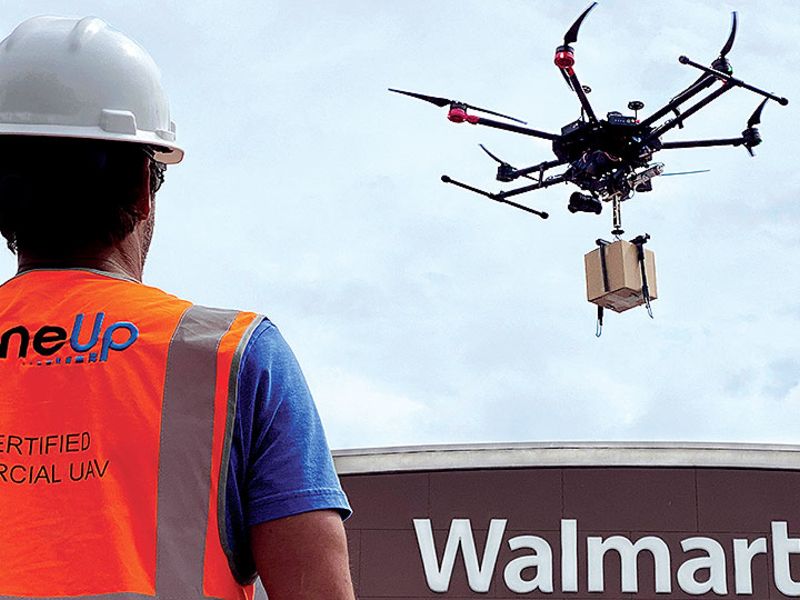
Delivery of goods is commercializing autonomous vehicle technology much faster than transportation of people is, and that gives Walmart a pole position in the race to use driverless vehicles.
America’s largest retailer already revolutionized logistics once, beginning a half-century ago, with the industry’s first major distribution centers and its launch of “continuous replenishment” of goods in stores. Now, the iconic chain of 4,700 U.S. stores, based in Bentonville, Ark., has deployed a series of autonomous test vehicles, applying lessons learned during the curbside-pickup craze sparked by the coronavirus pandemic while leveraging Walmart’s legendary ability to optimize supply chains continuously.
Walmart recently invested in DroneUp, a drone-services provider. Last year, the companies partnered with Quest Diagnostics to conduct trial deliveries of at-home COVID-19 testing kits. That followed Walmart’s investment in Cruise, the AV outfit started by General Motors, after Walmart launched a delivery pilot with Cruise in Scottsdale, Ariz., last year.
The company also has been piloting deliveries in Arkansas by autonomous box trucks in a partnership with startup Gatik, and this year they’re removing the safety driver.
Since 2019, Walmart has been piloting driverless grocery deliveries with Nuro, a robotics startup that also is partnering with other major companies including Domino’s.
Correspondent Dale Buss talked with Tom Ward, 36, Walmart senior vice president, last mile, about the company’s AV strategy. Here are edited excerpts.
Q: Walmart was a pioneer in retail distribution and logistics, and it created huge competitive advantages for the company for decades. Are you approaching autonomous delivery in the same strategic way?
A: Yes, I think so. We’re basically focused on what technologies are emerging, what things are happening in the space that allow you fundamentally to better serve the customer. To think about what busy families need and connect to our overall mission. It’s about speed, about convenience, and obviously about great prices.
Brick-and-mortar stores can be a big advantage and a drag in some ways. What is the importance of autonomous delivery in your ongoing battle with Amazon and other e-tailers?
Ninety percent of America is within 10 miles of a Walmart. It was super important as a physical, shoppable location. But increasingly, the store has evolved into being a true digital, omnichannel asset. The store then becomes a shoppable fulfillment center for customers for pickup and delivery as well as a statement of change and an opportunity to [try] distribution technologies for the store and the customer.
For example, we’ve partnered with several drone companies, all different, allowing us to truly utilize the store and asset as a forward-deployed base to use new technologies and connect them to what customers need.
Is Walmart’s approach with AVs to throw a bunch of mud at a brick wall and see what sticks, figuratively, or to be more selective and granular?
We want to make sure we have a wide net cast when it comes to testing and learning. With drones, for instance, there is a huge diversity in approach, so we have three partnerships that represent a huge cross section of technologies.
We want to learn what customers like and what makes sense in different situations. Once we get the formula right, and what works for the customer, we accelerate and move into that space really quickly.
With Cruise, it’s a mindful step: cut costs, increase speed and reliability of delivery with no one driving the car. And lower the cost of the last-mile space.
We can share that with customers. Our plan is to do more and more of it.
What have you been learning about the nitty-gritty of autonomous delivery?
When you fall in love with the problem and not the solution, these technologies come together in a way that begins to open new opportunities.
For example, we’ve been amazed by the acceptance of the technology when you get it right, but it’s also very clear when you don’t get it right. We’ll continue to change.

